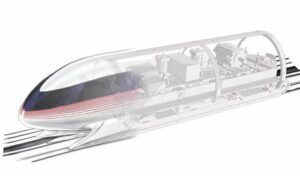Explore reshoring and nearshoring best practices and examine how these two approaches offer a pathway to resilient and sustainable success!
In recent years, the manufacturing landscape has witnessed a significant shift as businesses seek to optimize their supply chains and adapt to evolving global dynamics. Reshoring and nearshoring strategies have emerged as effective ways for companies to enhance competitiveness, achieve cost efficiencies, and foster sustainability. This article explores the best practices for implementing reshoring and nearshoring strategies in manufacturing, examining how these approaches offer a pathway to resilient and sustainable success.
1. Understanding Reshoring and Nearshoring
Reshoring involves bringing manufacturing operations back to the home country from overseas locations. It seeks to capitalize on the benefits of local production, including reduced transportation costs, improved quality control, and increased responsiveness to market demands. Nearshoring, on the other hand, involves relocating manufacturing operations to countries in close geographic proximity. This strategy strikes a balance between cost savings and operational flexibility.
2. Conducting Thorough Cost-Benefit Analysis
Before embarking on reshoring or nearshoring initiatives, businesses must conduct a comprehensive cost-benefit analysis. This analysis should assess factors such as labor costs, transportation expenses, tariffs, regulatory compliance, and potential risks. Identifying all relevant cost components allows companies to make informed decisions and align reshoring or nearshoring strategies with their financial objectives.
3. Leveraging Technological Advancements
Technological advancements play a crucial role in reshoring and nearshoring success. Embrace Industry 4.0 technologies, such as automation, artificial intelligence, and the Internet of Things (IoT), to enhance production efficiency, reduce labor dependency, and boost overall productivity. Integrating digital solutions into manufacturing processes facilitates seamless collaboration between home and nearshore locations.
4. Building Strong Supplier Networks
The success of reshoring and nearshoring strategies hinges on robust supplier networks. Identify and collaborate with reliable local suppliers who align with your business objectives and share your commitment to sustainability and quality. A strong supplier network ensures a smooth flow of raw materials and components, reducing lead times and enhancing supply chain resilience.
5. Investing in Workforce Development
Invest in workforce development to equip employees with the necessary skills for modern manufacturing practices. Training and upskilling initiatives improve productivity, reduce errors, and enhance overall efficiency. Emphasize cross-training to foster flexibility among employees, enabling them to adapt to changing production requirements.
6. Emphasizing Sustainable Practices
Reshoring and nearshoring present opportunities to prioritize sustainability. Adopt environmentally responsible practices that align with your company’s values and promote sustainable growth. Reduce carbon footprints by minimizing transportation distances and exploring eco-friendly manufacturing processes. A commitment to sustainability can also resonate with customers, fostering loyalty and brand reputation.
7. Mitigating Risks through Diversification
To enhance supply chain resilience, consider diversifying manufacturing locations. Rather than relying solely on a single home or nearshore location, adopt a multi-location strategy to mitigate risks associated with natural disasters, geopolitical issues, or other disruptions. Distributing production across multiple sites provides a buffer against unexpected challenges and enhances overall business continuity.
8. Collaborating with Government and Industry Associations
Engage with government entities and industry associations to tap into resources, incentives, and policies that support reshoring and nearshoring efforts. Governments may offer financial incentives, grants, or tax benefits to encourage local manufacturing. Collaborating with industry associations provides access to valuable insights, best practices, and networking opportunities.
Reshoring and nearshoring strategies offer manufacturers a compelling pathway to sustainable success. By leveraging technological advancements, building strong supplier networks, and prioritizing workforce development, companies can optimize their operations and achieve cost efficiencies. Embracing sustainable practices and diversifying manufacturing locations enhances resilience and responsiveness to market fluctuations. Through a holistic approach that balances economic, environmental, and social considerations, reshoring and nearshoring become catalysts for a brighter future for manufacturing, one that fosters resilience, sustainability, and long-term prosperity.
The Perfect Planner Team is here if you have any questions about Reshoring and Nearshoring Strategies, and we offer a free consultation service. If you would like to connect with us on this article or any other topic, please message us on LinkedIn, shoot us an email at info@perfectplanner.io, visit our website at www.perfectplanner.io, or give us a call 423.458.2979.
Author: Thomas Beil
Publication Date: October 17, 2023
© Copyright 2023 Perfect Planner LLC. All rights reserved.






